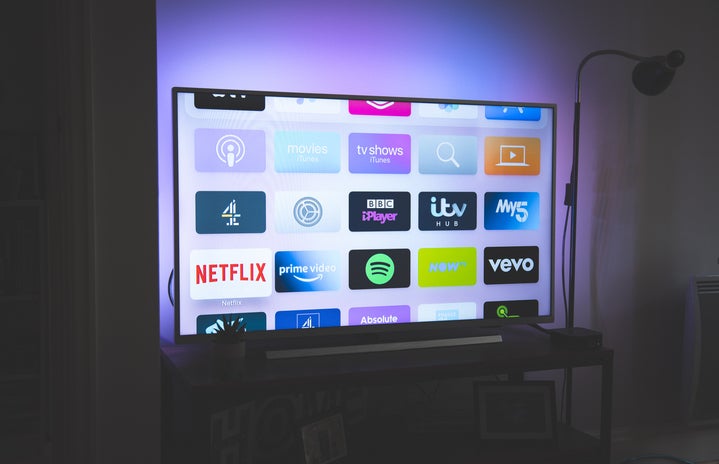The communicative nature of the Internet has allowed fandom to become mainstream: from teenage girls swooning over celebrity crushes to the older crowd discussing the newest Game of Thrones episode to YA lovers fangirling over their favorite novel’s unexpected plot twist. Every fan community is its own little world, a corner of the Internet for people to rant and rave about their favorite piece of media for as long as they’re interested in it. While said media is typically targeted at teens and up audiences, there has been a noticeable resurgence in works made for children as of late.
One lesson all social media users learn in their time online is that there’s a fandom for everything. No work, old or new, mainstream or obscure, can escape the wary eyes of random people on the Internet, and that includes children’s shows. From SpongeBob to Steven Universe to Avatar: The Last Airbender, kids’ media has managed to captivate the exact opposite of its intended audience. There #1 question here is WHY? Why are kids’ shows making a resurgence among adults? What about them could possibly be so appealing that they’ve managed to grab the attention of so many people?
The biggest factor in this is nostalgia. It’s absolutely everywhere now, in fashion and film and social media marketing. With throwbacks to the 90s and early 2000s come long-forgotten childhood memories of sitting on the couch, watching Saturday morning cartoons with a bowl of tooth-rotting sugary cereal. The shows that people watched as kids stand out because they set the standards of entertainment for those generations. A kid who grew up on Doug, Rugrats, and Ren & Stimpy is unlikely to find entertainment in kids’ shows created after they grew up. so when they look at the state of cartoons today, they might find themselves looking back on what they used to watch with fondness and nostalgia.
The kids’ shows of today couldn’t be more different from those of yesteryear. Where past shows were as driven by their plots and a desire to be engaging as they were by money. Today’s children’s shows are a mix of mostly nonsensical amusement meant to get a few laughs and jumbles of bright color and sound for kids to stare at mindlessly. Real entertainment with a discernible plot is becoming harder and harder to come by, particularly in the digital age. Shows made for adults are often dark and make it hard to escape into a fun, carefree world after a long day of work. In a world where parents keep their kids distracted by handing them an iPad that blasts CoComelon nursery rhymes all day long, it’s hard not to latch on to the first lighthearted show that treat the audience as intelligent beings.
Something else that connects to this is the fact that many kids’ shows hold up well for people of any age. My Little Pony may be a show for little girls, but its lessons and storylines are just as appealing to older audiences. SpongeBob SquarePants may be the world’s most ridiculous show, so absurd that only a child is expected to laugh at it, but it shaped multiple generations’ senses of humor. Even today it has become a beloved staple of Internet culture. Miraculous Ladybug may be a silly, repetitive play on the superhero genre; but its romantic pairings and the main characters’ struggles to balance their hero personas with their civilian identities make for a complex story that sends viewers’ emotions in every direction. Alongside Miraculous Ladybug are shows meant for older audiences that have more childish elements, such as She-Ra and the Princesses of Power, Steven Universe, Voltron: Legendary Defender. These shows are a combination of themes, plots, and character dynamics with enough depth to appeal to older audiences and enough lightheartedness family-friendly situations to entertain younger ones. Shows like these are as perfect for exhausted young adults in search of a temporary diversion from their real-life hardships as they are for parents who want to watch something together with their kids.
The Internet factors into the popularity of children’s’ shows, it is impossible not to mention – being in a digital world, surrounded by expansive fan communities, grants people the ability to fixate on their interests like never before. Before the Internet, fan-made content wasn’t as widespread as it is now, and meeting others with similar interests required people to interact with each other face-to-face. It was much harder to become so immersed in one piece of media. Now, however, people can dedicate all their social media accounts to one show. They can write and draw and talk about it as much as they want to. They can be interested in it for as long as they want to be. The people who began using the Internet at a young age can cling to childhood interests for years and years, so long as they continue to surround themselves with content related to them. While this is neither positive nor negative, it does reveal the more algorithmic side of social media. The more someone looks at posts relating to one subject the more posts about that subject get recommended to them.As odd of a phenomenon as it is, it’s unlikely that kids’ shows are going to fall out of popularity any time soon. They exist to fill a specific demand, even if they’ve captured the interest of an entirely new audience. If anything, there’s a high chance of more shows for all ages being made in the near future, if the success of Steven Universe, Voltron, and other such shows is anything to go by. The growing stresses of adulthood mean that escapism is even more desirable than ever. It is being able to sit down and watch something engaging that doesn’t focus on dark and stressful topics that may very well be the escape that people are looking for.


